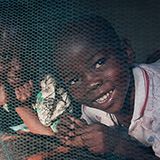193 Countries Share 8 Goals For Ending Extreme Poverty and Bringing Equity and Peace.

This article originally appeared on Ray Chambers’ LinkedIn column on the eve of the 2014 United Nations General Assembly.
When I embarked on my philanthropic journey more than 30 years ago I began, as many do, in the place I knew best: my hometown of Newark, New Jersey. The goals we set and the issues we tackled in Newark were local in their specificity – a struggling educational system, a high crime rate, a challenged child welfare program, a need for more arts and public spaces – but they were global in their underlying vision of achieving equity and justice for every Newark citizen.
Skip ahead to the year 2000. This is when I learned of a similar shared vision for building an equitable and peaceful world being devised by the most global of organizations: the United Nations. That year the 193 members states of the UN announced the Millennium Development Goals (MDGs) and committed themselves to achieving a set of eight goals that would cut in half the number of people living in extreme poverty. The MDGs provide clear targets for education, health, gender, climate and sustainability, but at their heart is a core recognition that the only way to a more just and peaceful planet is by leveling the playing field so that all men, women and children have access to a productive and meaningful life.
The MDGs have driven remarkable progress in so many countries across the globe over the past 14 years. More girls are in school, more children live to see their fifth birthdays and more families have access to clean water and sustainable sources of food than we ever could have imagined when the goals were set.
Yet the value of the MDGs extends beyond the tangible achievements of lives saved. These goals have linked all of mankind through a shared pursuit of something greater than our individual or even national selves. The MDGs have linked us globally.
There is no doubt that today’s world can feel fragile and dark. But the MDGs are living proof that, even in the most challenging of times we can collectively improve the human condition. Yes, we have made such great progress on these goals through smart interventions and billions in essential funding. But I’d like to believe that our greatest triumph under the MDGs has been the development of a shared global consciousness.
The world’s leaders are now heading into the 69th annual UN General Assembly week. With fewer than 470 days remaining to achieve the goals, we must look hard at how we can be more efficient as we work with limited resources. We must focus on the parts of the world that harbor the heaviest burdens of human suffering. And we must remember the millions of people who have been displaced and are unable to return to their homes because of war and unrest. The vision of the MDGs must support these people as well.
The MDGs have and will save millions of lives and strengthen communities across the globe. By doing so, they have made the often abstract concepts of equity, justice, and peace feel like attainable realities. For too many the notion of a more peaceful world is just that—a notion. But the MDGs gave us a roadmap and delivered on a collective promise to give every child an equal chance at a just and peaceful world.
On Sunday September 21st we mark the UN’s International Day of Peace. At noon across the globe people will close their eyes and observe a moment of silence and reflection. With millions of others I will meditate on peace and feel thankful for, and proud of, the world’s pursuit of the Millennium Development Goals. I hope you’ll join me.

